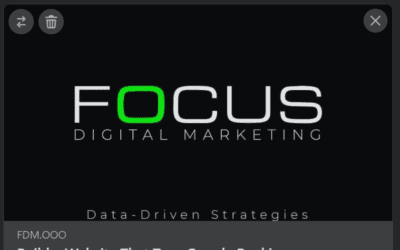With over 20 years of experience developing websites for businesses of all sizes I have had the opportunity to analyze data from hundreds of websites. While I never share clients’ data with anyone, the insights I gain from it indirectly influence my approach to future projects. Traditionally, when building a website, it is believed that it should have a homepage, an about us page, a gallery, a contact page, and maybe a services page, depending on the industry.
The Stats
This data is compiled from service-related businesses, excluding e-commerce. It represents auto repair shops, HVAC services, plumbers, electricians, auto detailers, and basically any business that provides a local service.
On average, users either click on the call to action or leave the site within 51 seconds. The next number may be somewhat skewed because we design every site to convert quickly by providing upfront information. So, out of nearly 2 million website visits to all our service clients, 99.1% of people do NOT click on a second page.
This data reveals the harsh reality: people do not care about your about us page, and they don’t really care about your gallery either. Why? We all know that no one would showcase bad examples of their work in the gallery. It only displays the best examples, so it holds no real value. Your about us page, too, doesn’t matter much to them as they are primarily looking for a service provider. They don’t really need a history lesson about your roots to call you to fix their AC when it’s 98 degrees outside; they just want it done. With that said, having that content is fine as long as it remains on secondary pages that no one will ever click. However, avoid putting them on your homepage. You do need SEO content, approximately 600-1000 words, on the homepage to satisfy Google. But keep it out of the way. Your customers are focused on three things:
- How much does it cost?
- Will they do a good job?
- How do I reach them?
So, list your pricing. For more information on that, see our article “Should I List My Pricing in 2023?” Secondly, focus on getting Google reviews. This is where customers make judgments about the quality of your business. If you have only a few reviews, especially if the most recent one is from a long time ago, it doesn’t inspire much confidence. In contrast, a business with 873 reviews and a 4.8-star rating instills confidence. Lastly, make your call to action simple. If you want customers to call you, have the “Call Now” buttons on the site. If you want them to send an email, provide email buttons. Make it easy for them to contact you and don’t rely on a secondary contact page that statistically, they will never see.
In conclusion, my thoughts about websites are simple: include only the necessary information to encourage customers to contact you. Anything else is a waste and may potentially give them a reason to have a negative reaction to your business.
Watched a Tech Tutorial on YouTube? You Might Be Under Surveillance! Not ClickBait!
Beware: Your YouTube Tech Interests Could Lead to Federal Scrutiny The recent subpoena of Google to unveil details of thousands of YouTube viewers watching technology-related content has sparked a privacy uproar. What seemed like innocent tutorials on drone mapping...
Maximizing Social Shares: Mastering Website OpenGraph Settings
What Are Website OpenGraph Settings? OpenGraph settings, a preview for social media interaction, comprise HTML tags that turn a simple URL share into an improved media experience. When you share a webpage on social platforms like Facebook, these tags dictate how the...







